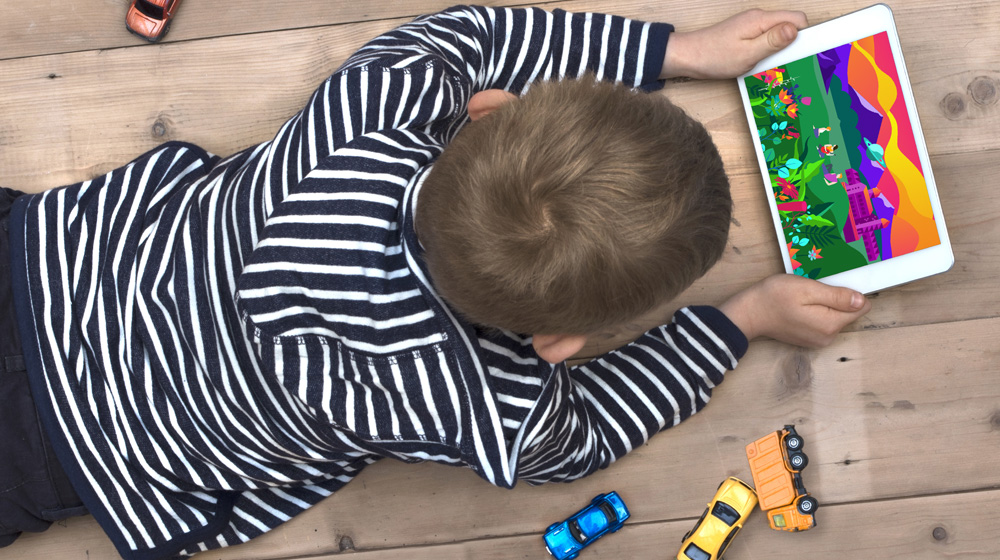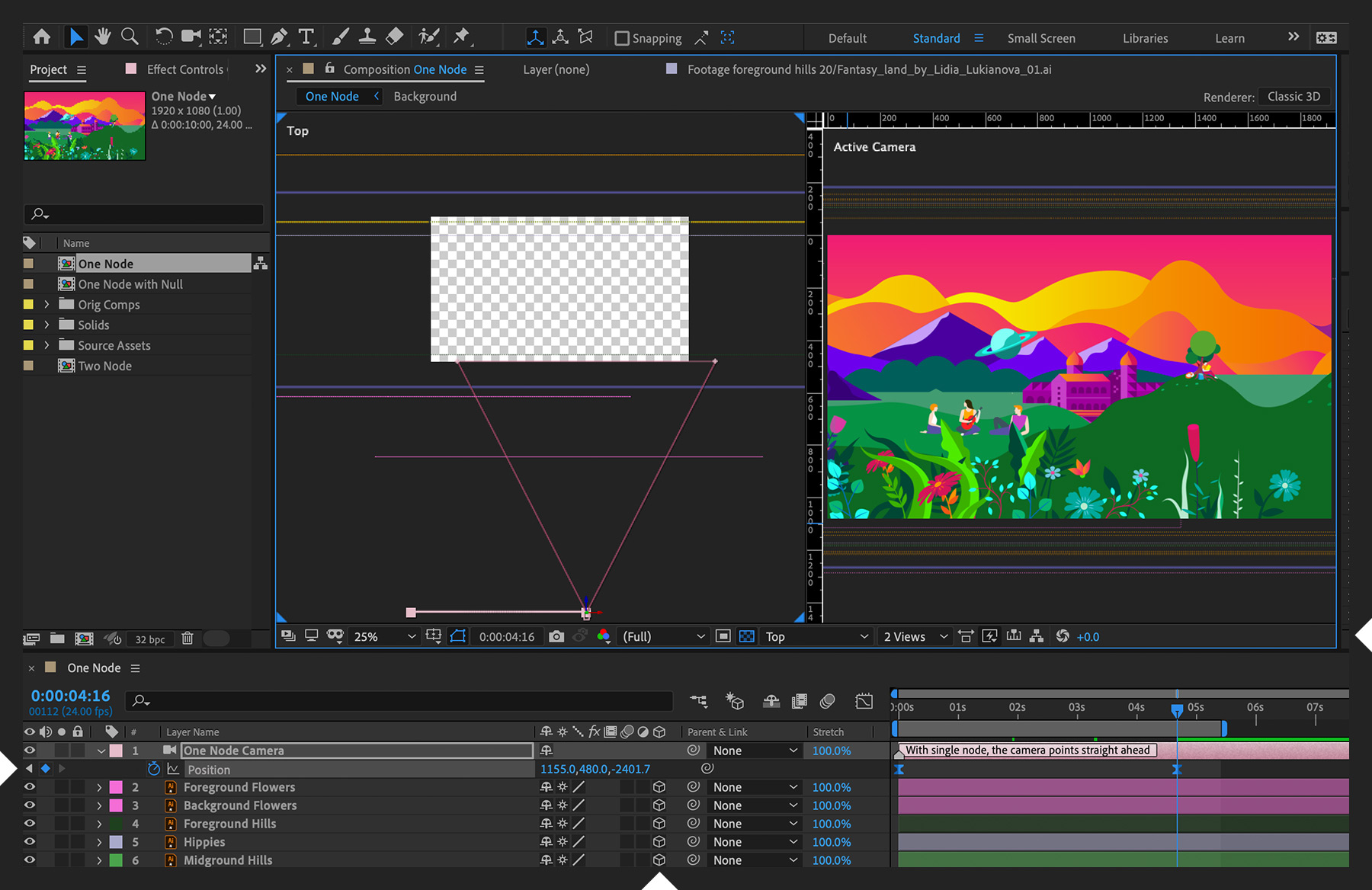How To Make The Camera Track Movement In After Effects
Utilize basic photographic camera rigging techniques in Adobe Afterwards Effects to animate a one-node or two-node photographic camera in 3D space.

Playing around with 3D cameras in Afterwards Effects means thinking like a cinematographer. Does your scene have a particular bespeak of interest (POI) or does the photographic camera migrate around? Will your photographic camera push button in dramatically, motility sideways, or orbit around your subject? The answer determines the type of camera y'all'll use.
A one-node camera never changes its orientation no thing where you move it. Imagine a camera placed on an office chair that rolls but doesn't swivel. No thing how yous roll that chair, the camera always faces the same mode. This photographic camera works great for a sideways "trucking" shot, every bit if shooting a landscape out of a machine window, or zooming into a big 3D moving picture title.
Create a scene within a composition that has foreground, center, and background planes. Convert the layers to 3D, if they aren't already, by selecting them and choosing Layer > 3D Layer. Experience free to use the "Fantasy Land" asset we've provided. Create a new camera (Layer > New > Photographic camera) and choose One-Node Photographic camera every bit the Type, leaving Enable Depth of Field unchecked. It should be the top layer in the Timeline panel. To run across what your photographic camera is doing, get to the lesser of the Limerick window and select 2 Views - Horizontal in the View Layout pop-up menu. Set up one half of the console as the Summit and the other as the Active Camera. Reveal the Position parameter (press P) of the Camera layer. As yous reposition the camera, notice how it consistently points in the same management. Set a Position keyframe, move the playhead afterward in the timeline, and modify the photographic camera'south X position. Every bit you preview your animation, see how you've achieved a sideways photographic camera movement.

A ii-node camera establishes a POI as the second node. Y'all tin withal move that chair in whatsoever direction only since the seat swivels, the photographic camera is able to point at the POI at all times.
Duplicate your ane-node camera composition (Edit > Duplicate), select the camera layer, choose Layer > Camera Settings, and specify Ii-Node Camera in the dialog box. Twirl open the photographic camera'south Transform options in the Timeline panel and see that you now take a parameter called Bespeak of Interest. Change the POI settings until an object appears in the eye of the camera's view. As you lot preview your blitheness, see how fifty-fifty though the camera moves the aforementioned equally before, it now swivels slightly so it remains focused on the object. Set a POI keyframe, movement forward in time, and then set some other keyframe where the POI is a dissimilar object. Now equally you lot preview, y'all'll see the camera shift its gaze from one to the other as it moves through the scene.

Either photographic camera blazon allows you to use a nil object to move it effectually. Continuing with the chair metaphor, imagine attaching a stick to the front end of your rolling swivel chair and grabbing the handle at the other end (the null object). As yous move the chair past pushing the handle toward or away from you, or past rotating in place, the photographic camera always points toward you. This option is great for a shot that orbits a signal of interest.
Duplicate the one-node camera composition and delete the existing camera keyframes. Make the photographic camera face an object in the centre. Create a null object (Layer > New > Null Object) and make information technology a 3D layer. Click the Parent & Link pop-upwards menu on your camera layer and select the null object as its parent. Twirl open your null'due south Transform properties and set a Y Rotation keyframe. Move ahead in time and set another Y Rotation keyframe. Every bit you lot preview your animation, see how the camera orbits your subject. Select all layers and look at the Pinnacle view in the Composition panel to become a improve idea of how the zippo affects your photographic camera'southward position.

Encounter how we fix our photographic camera to motion through the sample scene:
eleven/21/2018
Adobe Stock contributor: patrick
Source: https://helpx.adobe.com/after-effects/how-to/camera-animation.html
Posted by: finksalict.blogspot.com

0 Response to "How To Make The Camera Track Movement In After Effects"
Post a Comment